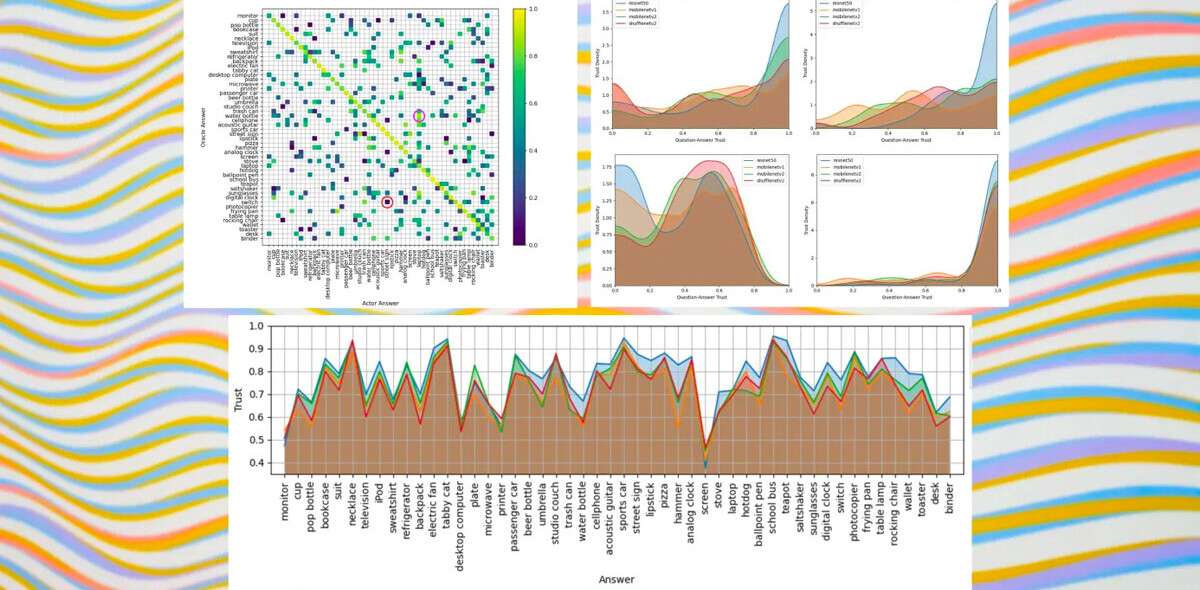
Whether they are proposing to build a wall or to exit an international coalition, populist politicians like to pitch themselves as keeping ‘outsiders’ at bay, and it clearly strikes a chord with their home crowd. To understand this phenomenon, evolutionary and social psychologists have offered a simple explanation. Humans, we’re told, have a deep-rooted inclination to mistrust ‘the other’ – people who do not belong to our community or ingroup.
Classic work published in 1970 by the Polish-born psychologist Henri Tajfel showed how rapidly and arbitrarily teenage schoolboys form a sense of loyalty to their own group, and a bias against the out-group, even when group membership was based on nothing more than a preference for one abstract artist or another. More recently, research shows that even preschoolers have a preference for playing with children of their own ethnicity or those who speak the same language.
One evolutionary hypothesis for our tendency toward ingroup loyalty is that it would have been advantageous to our tribal hunter-gatherer ancestors in their competition with rival tribes (as groups with more loyal and devoted members would have been more likely to survive and reproduce). The warring behavior is seen in our chimpanzee cousins, who form coalitions to steal the territory of rival groups, are cited as evidence that supports this theory.
Yet chimps might not be the most apposite species comparison for understanding humans, and there is a more optimistic perspective on human intergroup behavior, one that has been largely neglected by scientists to date. In a recent issue of Evolutionary Anthropology, Anne Pisor at Washington State University and Martin Surbeck at Harvard University explain that, among primates, humans are an ‘outlier’. We have a highly flexible approach to outsiders: that is we are capable of being highly tolerant – encountering and dealing with outsiders or ‘out-group members’ without resorting to violence – as well as being aggressive. How does that square with our picture of warring hominin bands in our evolutionary history?
Like many social animals, including several primate species, and also dolphins and elephants, we humans live in what is known as ‘fission-fusion’ societies – our allegiances are flexible; there is a fluidity in the size of groups into which we coalesce; and the boundaries between our groups or tribes are porous, depending on the circumstances. For instance, when food is abundant, individual members of fission-fusion species will temporarily dissolve their smaller formal groups and intermingle en masse.
In contrast, when food is scarce, individuals will split into rival groups to search for food in different locations. Peaceful intermingling can also occur in other circumstances, such as when individuals from one group go on reconnaissance to observe where other groups are finding their spoils. And in pursuit of mating opportunities, individuals of one group will complete a transfer into a different group – a process that might be preceded by earlier intermingling and reconnaissance.
These sociable, outward-looking tendencies that allow us to bend with the circumstances are as much a part of our evolved nature as our proclivity for tribal loyalty and bellicosity. Picture a crowded London park mid-summer. Sunbathers, readers, ball kickers, strollers and picnic lovers united in the shared human enjoyment of a little warmth. Like the sunshine, it might not last that long (it’s an abundant though seasonal resource), but momentarily at least there’s a communal mood in the air. The boundaries of the park bring us physically closer than we might usually find comfortable, but we don’t mind – it’s in our nature as a fission-fusion species to enjoy, or at least tolerate, such moments all together.
In fact, Pisor and Surbeck believe that we have evolved to be uniquely tolerant among fission-fusion species and that the roots of this lie in part in our unusually large brains and relatively high reproductive rates, compared with other primates. Together these characteristics make us extremely dependent on high-quality, high-risk (ie, unpredictable across time and location) food and tool supplies. In turn, this will have had implications for our foraging strategies, including the frequent need to rely on other communities during periods of resource scarcity. ‘This does not mean humans were, or are, peaceful all the time,’ Pisor told me. ‘But, where and when access to nonlocal resources is important, humans have often managed to find ways to be tolerant towards members of other communities at least some of the time.’
Whereas scholars have previously focused on bellicose chimpanzees as a way to gain insight into the evolutionary origins of our aggressive tendencies, Pisor and Surbeck believe comparisons with other, more tolerant nonhuman primates might be more apposite, especially for understanding the foundations of our uniquely tolerant nature.
Notably, food sharing and grooming have both been observed between bonobo groups, as has the formation of intergroup coalitions. ‘Bonobos aren’t always tolerant toward members of other groups,’ Pisor said. ‘During intergroup encounters, there are often conflicts between two individuals or even moments of tension that shake up many members of both groups. But that flexibility in intergroup behavior, to behave tolerantly or aggressively toward out-group members, is there, much like the flexibility we see in humans.’
Other nonhuman primates that display advantageous tolerant behavior (though not to the same degree as humans) include Tamarin monkeys, who have been observed forming mixed-species groups, learning new foraging strategies in the process; and baboons, who forage together (without breaking into separate groups or ‘bands’) when food is abundant and also come together to form huge ‘troops’ for greater protection at night.
A field of human campers gathered tent-to-tent under the moonlight is not so different from the scene of hundreds of baboons huddled together on the cliff-side at night. Just as our aggressive tendencies might have deep evolutionary roots that are apparent in the behavior of nonhuman primates, so too do our instincts for tolerance and peaceful coexistence.
We can also see traces of this evolved tolerance and cooperation in the way that we value leaders. We tend to attribute high status to individuals who are ‘well-connected’, especially during times when much-needed resources are not available locally – a phenomenon apparent in traditional societies. Pisor and Surbeck point, for example, to studies of the Coast Salish (Indigenous peoples of the Pacific Northwest Coast), who in the 19th century attributed high status to male village members who had the most ties to other communities. We tend to think of male warriors as enjoying all the power and glory, which might well be true during periods of war. But less acknowledged is that, in more peaceful circumstances, it is the cooperators and diplomats – the ones who build alliances, not break them – who enjoy high esteem. There are parallels here with the distinction drawn by evolutionary psychologists between prestige-based leadership and dominance-oriented leadership – the former based more on the ability to share skills and expertise, the latter on the ability to rule by fear.
Pisor and Surbeck argue too that social institutions (ie, group rules governing appropriate social behavior toward outsiders) have emerged in human history to encourage and enhance inter-community cooperation during times when tolerance toward outsiders and dealings with them is particularly advantageous. For instance, ingroup members who cheat the outgroup might be sanctioned if their behavior might imperil the benefits of between-group cooperation.
This is at odds with our conventional view of ingroup loyalty and outgroup hostility: it’s not too much of a stretch to see these dynamics playing out in contemporary politics, with some making public their desire to punish their own prominent group members who would endanger relationships with outgroups.
Since Thomas Hobbes’s bleak assessment in the 17th century of the natural state of humankind, it has been fashionable in many quarters to highlight the darker sides of human nature. As the historian, Erika Lorraine Milam explained in her Aeon essay last year, the problem with using evidence from our deep past to make claims about human nature is that it’s all too easy to cherrypick to present a simplistic, biased picture.
It’s true that we humans are inclined toward favoring our own ‘kind’, and our reputation for acts of horrific violence and hatred is not unwarranted. Yet this timely new review reminds us there is another, equally important aspect to our nature – our unique capacity for tolerance, not only to our own group but well beyond it.
This article was written by Christian Jarrett and originally published at Aeon and has been republished under Creative Commons.
Get the TNW newsletter
Get the most important tech news in your inbox each week.





